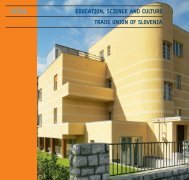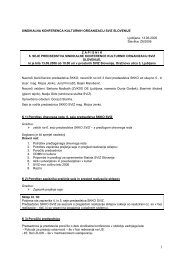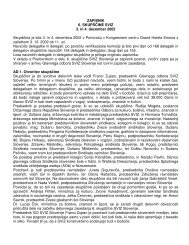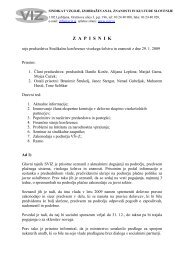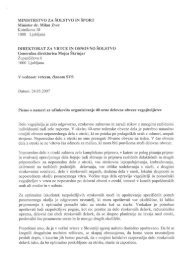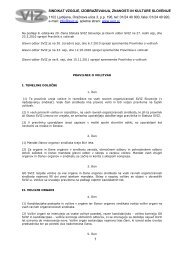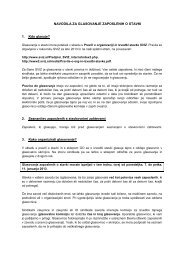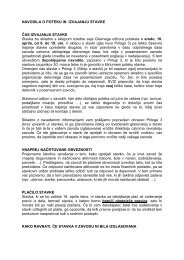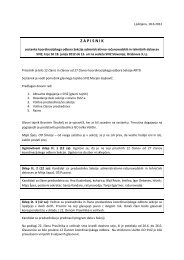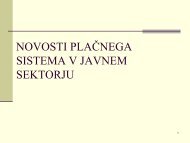You also want an ePaper? Increase the reach of your titles
YUMPU automatically turns print PDFs into web optimized ePapers that Google loves.
String Quartet No. 2 was written in 1925, three years after Haas had finished<br />
studying with Janáček. It was first performed in Brno in 1926 by the Moravian<br />
Quartet. However, particularly because of its ‘overly daring’ use of percussion<br />
in the last movement, it was not well received; the percussion was subsequently<br />
removed from future performances. In its four movements the quartet illustrates<br />
the atmosphere and imagery of the Monkey Mountains (the name<br />
given to the Moravian highlands, a popular tourist destination during Haas’s<br />
time). In the first movement (Landscape) Haas shows himself to be a master<br />
of tone painting, with a presentation of the monumental landscape of the<br />
region, including onomatopoeic depictions of bird calls and other natural<br />
phenomena. With its three themes and characteristic sounds of a journey<br />
over country roads, the third movement represents ‘Coach, Coachman and<br />
Horse’. Of all of the movements, the third (The Moon and I) is the most lyrical<br />
and personal, while the final movement (Wild Night) is spiced with folk<br />
melodies and jazz elements.<br />
Ludwig van Beethoven wrote his Sixth Symphony at the same time as the<br />
Fifth, and both works were premiered at the same concert, on 22 December<br />
1808 in the freezing cold theatre of the Theater-an-der-Wien. The four<br />
hour concert of Beethoven’s works was far too long to be a success, but its<br />
failure was further ensured by poor performances, as well as Beethoven’s<br />
loud interjections. As the first item on the <strong>program</strong>me, the Sixth Symphony<br />
(which was then numbered as the Fifth Symphony, while today’s Fifth was<br />
labelled the Sixth) was well received. The sister symphonies are different in<br />
character but actually represent two opposite poles of the same world view.<br />
The Fifth Symphony elevates the individual and is in constant development,<br />
while the Sixth Symphony presents man as dependent on nature and as its<br />
integral part. The harmony is not the goal but rather the order of things, and<br />
is characterised by an almost constant harmonic presence of triads, and the<br />
frequent use of bourdon. Harmonic tension is minimal and contrasts are<br />
small, while the sonic layers are static and gently undulating. The peace is<br />
only briefly broken by a storm.<br />
The preview of the concert described the Pastoral Symphony as “reminiscences<br />
of country life”. The composition is not so much determined by associations<br />
with the musical pastoral tradition as by Beethoven’s personal connection<br />
to nature, which derived from his inner emotion. The message of the famous<br />
statement “more feeling than painting” is clear: in spite of the work’s <strong>program</strong>matic<br />
title, Beethoven does not illustrate nature in concrete scenes of<br />
country life (with the exception of ‘By the Brook’, with its bird calls, and the<br />
imitation of the storm) but rather the echoes of nature in man. In the Sixth<br />
Symphony man’s emotions in the face of nature are brought together on<br />
an aesthetic a level; for Beethoven nature was almost a religious concept –<br />
‘gött liche Natur’, divine nature.<br />
Katarina Šter<br />
Prevod / Translation: Neville Hall<br />
PROGRAM / PROGRAM<br />
95



